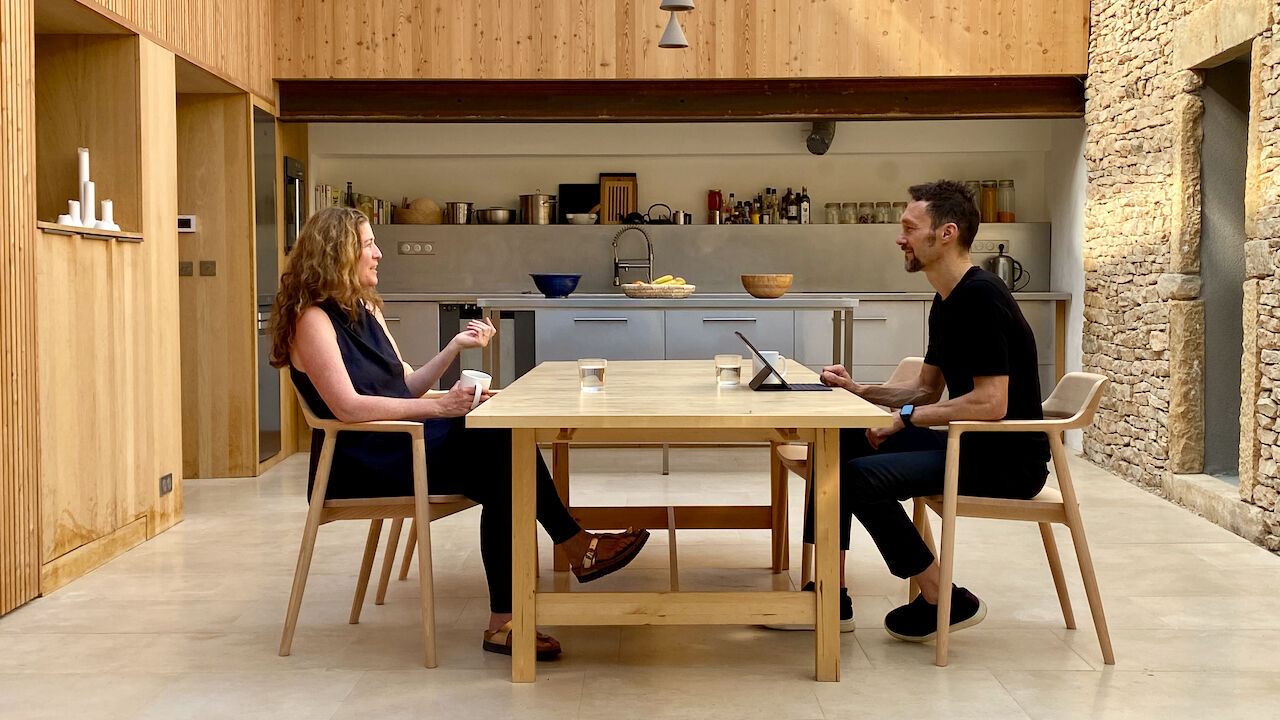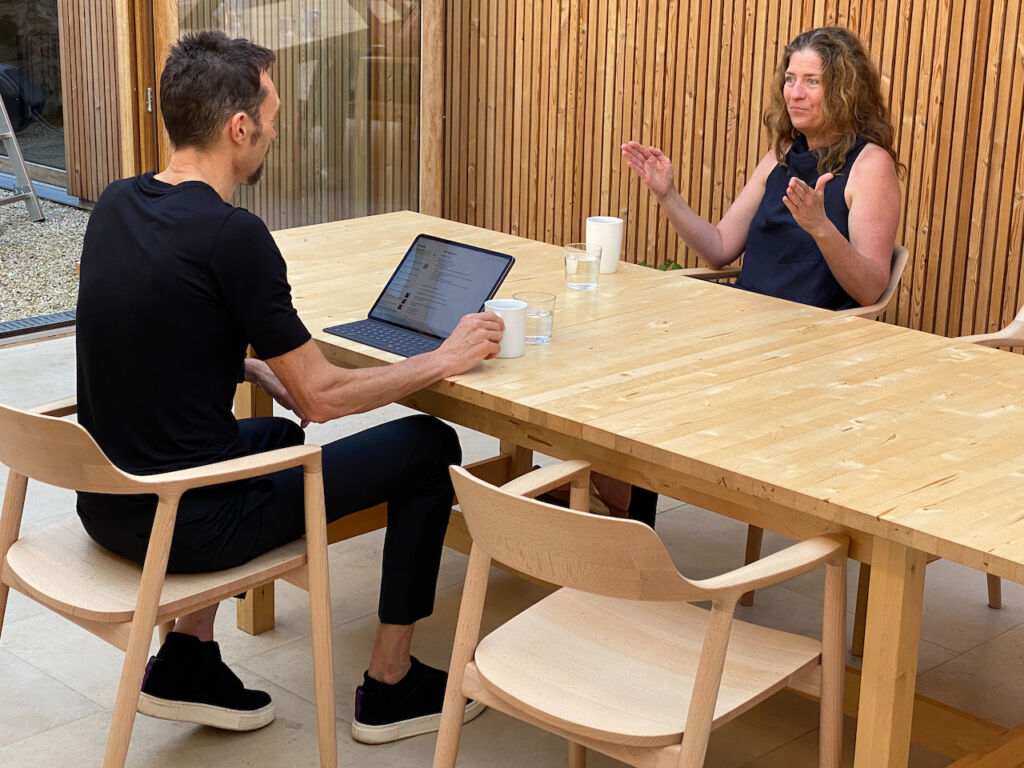Insights interview: instructor lessons from lockdown, and pointers for future edtech

What’s the purpose of this interview and who’s it for?
What lessons have been learned from the Covid-19 lockdown to guide innovation for edtech developers and OPM providers to better support educational institutions, educators, and learners in the future?
There has been a flurry of excellent articles written on the challenges of moving higher-ed courses fully online (e.g. Inside Higher Ed, the OECD, EdSurge, University World News, Harvard Business Review). I too have blogged about the risks of zooming to Zoom, what it will take for higher-ed institutions to win in the race to online programs, and research summaries about the science of remote learning.
However, I’m always looking for the seeds of future innovation. In my experience, these can often be found in edge cases which challenge current tools and paradigms, and therefore force innovation earlier, further, and faster.
Why look at a course on design at the New School Parsons Paris?
Instructors teaching higher-ed courses that are fundamentally practical, collaborative, and social face much bigger challenges moving successfully to fully online. And yet, solutions they are finding for building community, fostering collaboration, and non-digital coursework through Covid-19 offer insights for how future innovative edtech could support more inclusive, creative, and successful online courses.
For these reasons, I decided that amongst the many interviews I’ve had in recent months with instructors in K12, higher-education, private language schools, and corporate education around the world, it would be insightful to interview an instructor who has tackled the huge challenge of shifting a hands-on course to fully online through the Spring 2020 semester and Covid-19 lockdown.
Bring on Bridget O’Rourke, Director of the Art, Media and Technology program at The New School Parsons Paris. I’ve known Bridget for many years and have always been impressed by her extraordinary passion for teaching and her empathy for her students. Since she teaches courses in design and creativity, I was also fascinated to know how she had “solutioned” her way through Covid-19. Bridget faced an additional—and probably prescient—challenge: her college attracts students from around the world and Covid-19 forced them to return to their home countries so she and her fellow instructors found themselves teaching globally, around the clock.
Here’s what I learned from Bridget on lessons from lockdown and insights for future edtech innovators.
The interview
Good morning, Bridget. Thank you so much for making time for this interview. Can we start with some context about the courses you were teaching when the Covid lockdown hit?
I teach hybrid courses that combine art, design, and the humanities to examine the creative process, methodologies of art and design, and transdisciplinary collaboration. Our students come from all over the world. We transitioned to remote learning after week 8 of a 15 week semester. One course I taught included 21 students located on four different continents during the pandemic. The second course provided one-to-one coaching for individual students focused on their unique final thesis project. (This course was co-taught by myself in Paris and a colleague in Berlin.) It was important for both courses to maintain the group dynamic and individual creative momentum in order to complete the semester following such a rapid transition to remote learning.
What challenges did you expect for your students moving entirely online?
I knew that students would be anxious due to the pandemic and the complexity for many of them returning home to their families and differing international protocols for their re-entry. I anticipated keeping students engaged online during such an unprecedented crisis would be more difficult than it turned out to be. Technology served us well as a reconnector and a coping mechanism following the absolute rupture of community we all experienced.
How did you redesign your course to be fully online and what guided you?
I modified my courses on a day-to-day basis by seeking regular feedback from my students and trouble-shooting with my fellow instructors. We developed best practices that we shared in real time. To capture student feedback, we used both open discussion and anonymous surveys about which aspects of synchronous and asynchronous learning were most useful and why. We analysed this information each week to help guide the next stage of the course projects.
How did you adapt your course scheduling and choreography to be fully online?
Our students study full-time with an average of 5 courses per semester. Moving online we had to reconsider time to complete coursework beyond class time. Our core studio courses meet for 5 hours each per week and we found that students had a hard time staying online and fully engaged for that long. I tried to keep my approach simple and imperative. What was essential? How could it be summarized and modulated into smaller parts that were engaging and collaborative? Most importantly, I focused on why doing their creative work was important and how it could give meaning to their experience. The final project was on the theme of invisibility and left room for a variety of physical and psychological interpretations. Student work ranged from game designs on the stages of life to sonic works about isolation during confinement.

What did you need to change in how you support your students?
We found that online teaching takes more preparation time for instructors not less. Accompanying students to be sure that they are all making progress takes significant emotional investment on the part of the instructor but is definitely worth the effort. Instructors need to also consider the psychological aspects of exclusively having online contact with students and learn to read all the signs of students facing difficulty. For example, we found some students had unreliable internet due to personal economic difficulties and/or infrastructure in their home country. In other cases, we found that reflecting carefully on how each student engaged in a session was critical to spotting those in need. Did the student keep their video off for the entire session? Did they unmute their microphone when prompted to speak? Did they meet online submission deadlines? How was their work developing over time? An instructor has to be empathetic and not automatically assume a student is not participating because they’re not interested or lack motivation. Fully online courses comprising a suite of digital tools are subject to even more technical issues and these can add substantial ambiguity to active engagement.
How did you and your fellow instructors change your approach as teachers?
We came to realise that students did not necessarily wish to follow our long lectures! Accepting this takes humility and adaptability on the part of the instructor to condense what they cover. Instructors are live conductors and have to occupy a position of interest and semi-authority for their students. Students who feel respected tend to be led by teachers who are both confident and open to criticism. To achieve this duality, instructors need to encourage feedback from their students to stay ahead of the curve—even if it’s negative feedback. User Experience (UX) design exercises with students can help with this process and can be really fun! I conducted a series of exercises about how the various platforms we were using could be re-designed to suit all of us better. We (students and instructor) were all users; sharing perspectives from our side of the platform was informative on the technology and on communications itself.
In conclusion, what lessons from lockdown would you share with fellow instructors for future higher-ed online and blended programs?
Be clear and well-organized. Give students short, intensive exercises with a required outcome that is designed to be collaborative while fully encompassing the specific learning objective(s). Allow students to be co-presenters and co-producers so that they are empowered and understand that they are essential contributors to the learning environment. Overall, it’s not about the technology per se but the pedagogy and affective connection between individuals that matters throughout the learning experience. Technology can enable or hamper that process depending on how it’s designed and used.
And what lessons from lockdown would you highlight for edtech and online program developers so they develop future tools that better facilitate the online collaboration and community you describe?
First, integrate the technology and messaging so that students do not have to assimilate info and instructions from multiple channels (emails, Zoom chats, Gdocs and various learning management platforms)! This helps to keep all students in sync and course progress up-to-date. Second, develop tools that give instructors and students new ways to demonstrate meaningful participation in coursework. Third, online courses obviously lack important non-verbal elements of communications and the slight time delay in Zoom sessions exacerbates this disconnect—look at ways to improve that. Fourth, we are also missing the tactile and material realities that are essential to our subject matter (art and design), so providing tools that make online learning more ‘physical’ would be great! (We used video podcasts for students to showcase their coursework.) Finally, there’s a performance component to teaching that makes a class both urgent and awe-inspiring. Instructors need to connect with their student audience and students need to ‘feel’ the presence of one another. This awareness of connection is the root of any collective learning experience. Technology that better supports such proximity among participants, in real-time, is what I hope for in the future.

Your passion for your students is inspiring, Bridget. Thank you for being so generous and honest with your insights!
You are most welcome, Adam. Online courses are definitely here to stay. The closer we bring the strengths of in-person, onsite education to online, remote methods of learning together, the better.
Conclusions
If you’re an edtech leader developing tools for future online and blended courses and looking for expert advice on growing your service, sharpening your go-to-market strategy, leveraging learning science to make your service more engaging and impactful, or gaining data insights from your users to guide your roadmap, please contact us using the form below.
